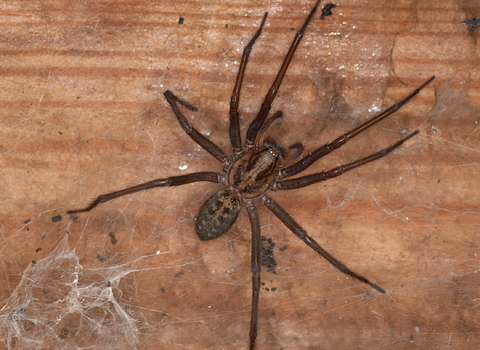
Giant House Spider ©Malcolm Storey
Giant house spider
The giant house spider is one of our fastest invertebrates, running up to half a metre per second. This large, brown spider spins sheet-like cobwebs and pops up in the dark corners of houses, particularly in autumn.
Scientific name
Eratigena atricaWhen to see
January to DecemberSpecies information
Category
Statistics
Body length: up to 1.6cmLeg span: up to 7.5cm
Common.
